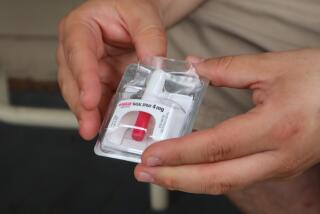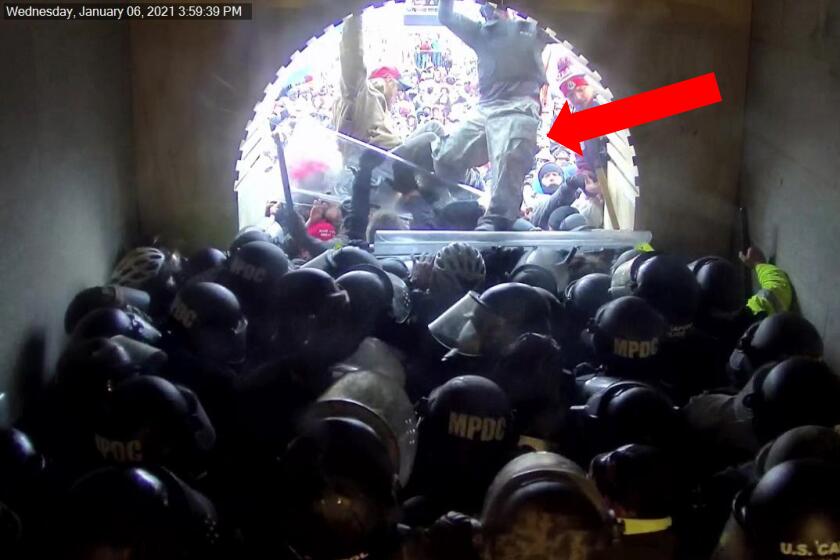Legislators Press for Change to Lethal Injection : Punishment: Urgency bills are offered in Assembly and Senate. Speaker Brown expects passage in lower house.
- Share via
SACRAMENTO — Swift on the heels of the execution of Robert Alton Harris, urgency legislation was proposed Tuesday to substitute lethal injection for cyanide gas as the method of carrying out capital punishment in California.
Democratic Assembly Speaker Willie Brown Jr., an opponent of capital punishment, immediately predicted that the measure would win approval in the Democratic-controlled Assembly.
“I think there are probably a sufficient number of people who would support such an effort,” said Brown, a skilled vote counter. He noted that in recent years there has been a “genuine turnaround” among Democrats who once could be counted on to oppose the death penalty.
In the Assembly, a lethal injection bill was announced by Assemblyman Tom McClintock (R-Thousand Oaks) six hours after double-murderer Harris was put to death in the gas chamber at San Quentin prison. In the Senate, similar legislation was proposed by Sen. Quentin L. Kopp (I-San Francisco).
McClintock carried a similar bill four years ago that was killed in the Assembly Public Safety Committee in the face of what McClintock called “strong opposition” of the American Civil Liberties Union.
McClintock told reporters Tuesday he believed the latest bill would do “far better” because Harris’ death made capital punishment an “established fact rather than a theoretical exercise” and public and legislative attention are fixed on the issue.
He said he advanced the bill not as a more humane way to carry out a death sentence but rather as a way to eliminate legal challenges that cyanide gas is an unconstitutionally cruel and unusual punishment. This argument was employed at the last minute by the ACLU on Harris’ behalf.
As proposed, both the Kopp and McClintock bills would require a two-thirds vote of the Legislature and Gov. Pete Wilson’s signature to take immediate effect as an urgency statute, possibly in time for the next execution, which has not been scheduled. Both bills would give those now on Death Row the choice of inhaling lethal gas or receiving a poisonous injection. But under the McClintock bill, those condemned to die after it becomes law would receive the injection and not be given a choice.
In the Senate, Chairman Bill Lockyer of the Senate Judiciary Committee, a Democrat from Hayward and a supporter of capital punishment, indicated that he believed Wilson’s support for such a bill was critical, “otherwise we’d be performing a futile exercise.”
“The governor has no comment,” said deputy press secretary James Lee. “He has offered no opinion on the subject.”
Assemblyman John Burton (D-San Francisco), liberal chairman of the Public Safety Committee and a fierce opponent of capital punishment, expressed indifference to the methods used to put someone to death. “If you’re dead, you’re dead, aren’t you?” he said.
Some opponents of the gas chamber have cited the fatal injection as a virtually painless and more humane alternative. Twenty-two other states administer the death penalty by lethal injection.
At a news conference, McClintock seemed to invite the ACLU to oppose his latest injection bill after the organization argued in the Harris challenge in favor of such an alternative to gas. He claimed that for the ACLU to oppose his bill now “would completely destroy whatever credibility they have with the Legislature.”
Officials of the ACLU did not return telephone calls about the bill Tuesday.
Methods of Execution
The execution of Robert Alton Harris in California’s gas chamber, the first in 25 years, has renewed the debate over the way in which Death Row inmates are dispatched. Here is how California’s current method compares with the most likely alternative.
Death by Cyanide Gas
* Cyanide works by blocking the enzyme cytochrome oxidase, which aids in the transfer of oxygen from the bloodstream to tissue.
* The poison gas is inhaled through the breathing passages and absorbed through the skin.
* As the body is deprived of oxygen, muscles go into spasm and the heart begins to beat irregularly. Unconsciousness typically occurs within 15 to 30 seconds.
* The heart and brain have the most need for oxygen. The oxygen supply to those organs fails when breathing ceases. Death follows within minutes.
Death by Lethal Injection
* A combination of fatal drugs is used to cause death.
* A strong barbiturate renders the subject unconscious.
* A paralytic drug, usually curare, stops the muscles that control breathing.
* High concentrations of potassium stop the heart from beating.
* Death occurs within minutes of the injection.
More to Read
Get the L.A. Times Politics newsletter
Deeply reported insights into legislation, politics and policy from Sacramento, Washington and beyond. In your inbox twice per week.
You may occasionally receive promotional content from the Los Angeles Times.










